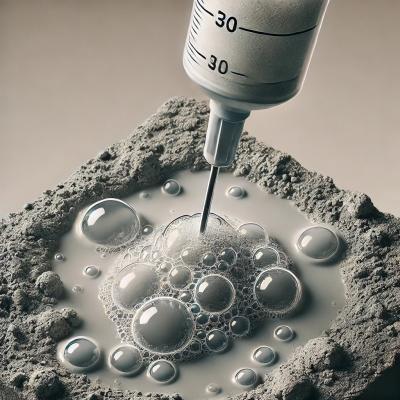
Introduction
Concrete is a fundamental building material, but its production is a major source of carbon dioxide (CO2) emissions. However, a recent study published in Nature Nanotechnology introduces an innovative approach to sequestering CO2 in cement, potentially transforming the concrete industry into a carbon sink while also strengthening the material.
The Role of CO2 in Cement
The cement industry is responsible for about 8% of global CO2 emissions. Traditional methods of incorporating CO2 into concrete have been inefficient and energy-intensive. These methods often result in weakened concrete due to the slow diffusion of CO2 into the material. The new approach addresses these issues by injecting CO2 directly into a cement suspension before it hardens.
Innovative Carbonation Process
The study explores a process where CO2 is injected into a diluted cement suspension. This method turns the carbonation reaction into an aqueous ionic reaction, which is much faster than the traditional diffusion-controlled methods. This innovative technique achieves a CO2 sequestration efficiency of up to 45%, significantly higher than previous methods, and does not compromise the strength of the concrete.
Benefits of Sequestering CO2 in Cement with Carbonated Water
Higher Sequestration Efficiency
By injecting CO2 into a cement suspension, the researchers achieved a more efficient and faster carbonation process. This method allows for the capture of a greater volume of CO2, making it a more effective way to reduce emissions from the cement industry.
Enhanced Concrete Strength
Unlike traditional methods, which can weaken concrete, the new approach maintains or even enhances the material's strength. This is crucial for ensuring the durability and safety of concrete structures.
Reduced Carbon Footprint
The new process reduces the carbon footprint of concrete production. By turning the cement and concrete industries into carbon sinks, this method helps to mitigate the environmental impact of construction activities.
Potential for Industrial Implementation
The technological simplicity of the proposed method makes it promising for industrial implementation. The process can be easily integrated into existing production lines, offering a scalable solution for reducing CO2 emissions in the cement industry.
Conclusion
The new method of injecting CO2 offers a groundbreaking approach to both sequestering CO2 in cement and strengthening concrete. This innovative technique not only addresses the inefficiencies and high energy consumption of traditional methods but also provides a scalable and effective solution for reducing the carbon footprint of the cement industry. The study highlights the potential for turning a major source of CO2 emissions into a carbon sink, paving the way for more sustainable construction practices. For more details, you can read the full study here.
